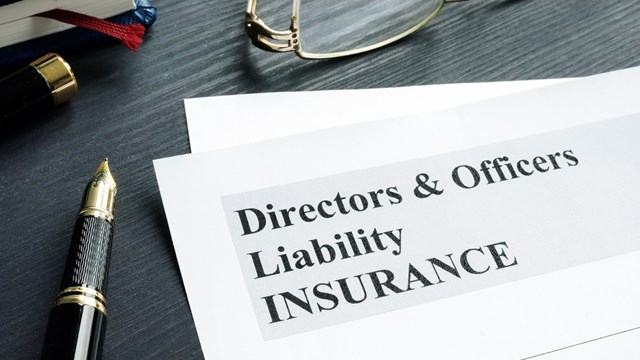
Most homeowners love the idea of having a swimming pool, athletic court or health club as part of their association's grounds because it adds value to their property and it gives them something fun to do throughout the year. But HOAs that offer these types of facilities may need to have supplemental or additional insurance to cover the potential hazards that come with deluxe amenities.
Insurance Concerns
When it comes to potential high-risk amenities like pools and gyms, basic liability coverage just doesn't do the trick. All insurance policies are not created equal, and getting proper coverage for your association's amenities is crucial.
"One HOA's amenity may not increase their premium at all, whereas the same amenity would increase a premium in another HOA," says Cappy Stults of Allen & Stults Co. Inc., an insurance brokerage based in Hightstown. "For instance, a pond in an adult community might not be of concern for an insurance underwriter, but an identical pond in a non-age restricted association would increase their cost. If it was next to a playground, it might even constrict coverage availability."
The Deep End
The one amenity that is of most concern to insurers and which can raise an HOA's premiums the most significantly is the swimming pool. Since pools are also one of the most popular amenities, boards need to be aware of the insurance issues involved.
"Mostly we see pools as the biggest exposure, with or without lifeguards," says Vincent Hager, who specializes in community association insurance at JGS Insurance in Holmdel. "That has become a very big topic as of late, with so associations trying to cut back on their costs by having either no lifeguards, or hiring their own individual as a lifeguard. So you're picking up that additional exposure, where you would normally get risk transfer as additionally insured for that."
"Pools are a concern, but there are others," adds Lori Long of Community Association Underwriters in Newtown, Pennsylvania. "Depending upon the clubhouse and what amenities that clubhouse has, that can be an issue. For instance, if they have areas for large commercial cooking and large parties and gatherings for people coming in, that would be a concern. If they have a tennis court and basketball court, from a premium standpoint, that's not a big hit as long as they are maintained. A lot of people have a lot of losses on un-maintained tennis courts and basketball courts because people can trip and fall. When that happens, their premiums go up in general."
There are ways for HOAs to limit their liability and reduce their premiums if they operate their amenities properly. The use of good risk-management techniques and making prudent decisions are the first steps in controlling losses and avoiding risk.
"Risk can never be totally avoided," says Stults. "Procuring insurance, however, is not the sole method of risk transfer. Use of qualified, fully insured independent contractors can control and transfer losses, and thus reduce premiums."
Professional, fully insured pool maintenance and lifeguard contractors are used by many to control pool premiums. There are also contractors for gyms, snow removal, grounds maintenance and a myriad of other examples as well.
"But sometimes doing it yourself is preferable, depending on the amenity, users, controls and prior loss experience," Stults adds. "Legal counsel should be consulted to advise how bylaws and other agreements can be drafted or amended to limit the liability to the extent allowed by law."
Slippery When Wet
When it comes to pools, proper signage should always be prominently displayed, explaining the rules of the pool, and all town ordinances should be followed. It's important to document everything and be honest about what the rules are.
"If you're not supposed to be jumping and diving in the pool, make sure there are signs that say 'no jumping' and 'no diving,'" says Long. "If there is a shallow area, have age restrictions. Don't let kids in unless they're accompanied by an adult. If you have people signing in and out, keep records of who is there and when they are there. Keep maintenance records as well, because people can claim they got a rash or something from the chlorine—it's the simplest things that can take you down."
"You want to limit the people going to the pool to members and guests, make sure no one is swimming by themselves, make sure that after hours when the pools aren't used that rules are clearly posted and there are safety measures available," says Hager. "We are seeing a lot more of associations having the public access defibrillators on hand as well, and getting training."
Nowadays, Hager continues, most insurance companies simply won't write a diving board exposure—or they will charge extra if they do. Slides are also a concern, but again, if you have a slide, post a sign that says "feet first only" because kids have an alarming propensity to go down water slides headfirst.
Money Matters
There are really no set standards or rules of thumb for choosing liability limits, and breadth of coverage varies from insurance company to insurance company and should be carefully compared by a trusted insurance professional.
"Clearly, however, those HOAs with facilities where multiple individuals can be injured by the same occurrence [meeting rooms and owned vehicles are good examples] should have higher limits than an HOA that only owns vacant land," Stults says. "You should always remember, however, that one of the major benefits of liability insurance are the defense cost provisions. If damages being sought exceed an HOA's limits, this benefit is reduced."
In addition to a regular liability policy, there are also umbrella policies and riders that should be purchased to counter any potential problems. Long recommends buying as much as your association can afford.
"It depends on the size, the assets, the demographic living there," she says. "A lot of associations will have $2 million in underlying coverage and another $15 million in umbrella coverage. It runs the gamut though. If people are going to procure true umbrella coverage, make sure those limits are not linked to anyone else's limits."
Hager explains that most policies start with $1 million, but his company also recommends an umbrella policy of $15 million, and also a directors and officers—or D&O—policy. "Depending on the makeup of the community, sometimes you can go even higher," he says. "You can easily go with $25 million, $50 million, even $100 [million]."
Most of the time riders are included in the policy itself, but again, it depends on the carrier writing the program. All carriers do different things. "The pool may be included in general liability package, or they may have to specifically say, 'We have a pool and we need coverage for that pool,' in which case it would require an endorsement," Long says.
In Touch
There needs to be continual open dialogue between the leaders and staff of a community with the "works" and their insurance advisor.
"The advisor must be available and routinely visit the community in order to discover changes that may not have been brought to his or her attention," Stults says. "Reading the community's newsletter or newspaper is a must, as is receiving all injury and damage incident reports—regardless of whether or not a claim is to be made."
Share the Wealth—and the Cost
When extra insurance is needed for these amenities, the cost is absorbed mostly through maintenance fees and assessments.
"It's usually spread out among all unit owners, whether they are members of the gym or pool or not," says Hager. "It depends on the place though. It could be equal across the board, or could be based on square footage of a condo or co-op."
Risk management consultants are also available for providing HOA boards and/or management with getting the best deal for their insurance dollar.
"They are available," says Long. "Associations usually get three bids and compare them and the consultants can tell people where the gaps are. Most insurance agents themselves can do that and they can save the cost."
Remember, just receiving certificates of insurance and insurance policies does not assure an HOA that insurance exists for all amenities or operations. Whenever possible separate policies for specific amenities or activities should be avoided.
In the end, most boards and associations must strike a balance between the amenities they offer their residents and the expense and potential liability those amenities represent—not only to the board, but to every member of the HOA. With good professional advice, attention to policy details, and regular reviews, any HOA can have the amenities that attract new owners, while making sure the community is protected by the proper insurance coverage.
Keith Loria is a freelance writer and frequent contributor to The New Jersey Cooperator.






Leave a Comment